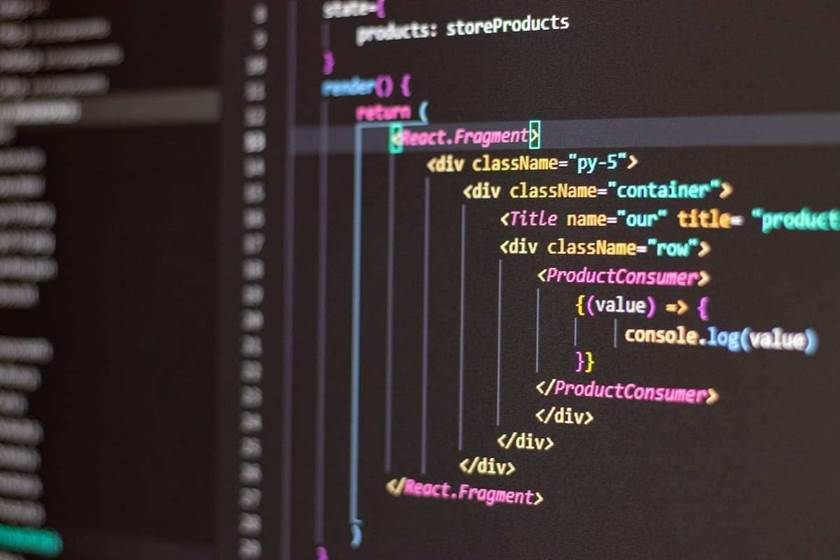Currently a work in progress, it is a vision of a decentralized and open web with greater utility for its users. For everybody, Web 3.0 offers a much more individualized surfing experience. Websites will be able to automatically adjust to our device, location, and any accessibility needs we may have, and web apps will become far more receptive to our usage patterns. There are services that help customers connect to their cryptocurrency wallets used for illegal behavior. Many web inventors, including the above-mentioned Jeffrey Zeldman, pioneered the set of technologies used in this internet era.
To do so, be sure you have already deployed the contract to the network in the previous steps and you still have the local network running. Now that we have the ability to create posts, how do we navigate and view posts? We want to have the ability to view a post in a route that looks something like myapp.com/post/some-post-id.
What are the main technologies in Web 3.0?
Data belonging to the user will be protected via a network of openly available smart contracts. These contracts will be stored in a blockchain, which a decentralized network that nodes will control. Though the whole concept of Decentralized Autonomous Organizations or DAOs is extremely wide, the future of building businesses or things gets an extraordinary vision with Web 3.0. Therefore, it is vital that Web 2.0 developers should make the most of the decentralization concept making the internet a more personal space for the users. However, Web 3.0-based payment applications are based on the crypto concept, which makes borderless transactions extremely simple and safe without giving up sensitive data or personal details. A common example is Solana, a network that allows transactions in fractions of milliseconds at a very minor cost without making the user share their personal information.

Web 3.0 aims to create more interconnections between diverse technologies, so data flows between different platforms without intermediaries. Interoperability makes data portable so users can seamlessly switch between services while maintaining their preferences, profiles, and settings. New techniques are also required to provide the best user experience (UX) for decentralized apps. “In the world of networked applications that are primarily open source, the ones with the best UXs will win,” Aslanian said.
How to become a Web 3.0 developer: Required skills and guide
Web 3.0 has moved well beyond the original concept of the Semantic Web as conceptualized by Berners-Lee in 2001. Web refers to the World Wide Web, the internet’s core information retrieval system. The WWW initials used to (and often still do) preface a web address and were among the first characters typed into a web browser when searching for a specific resource online.
The multidimensional Web 3.0 will help more than just websites; it will also enable web apps to provide users with far richer experiences. Consider a mapping service like Google, which can now include route planning, lodging suggestions, and real-time traffic updates in addition to the fundamentals of location search. On the other hand, Web 3.0 apps are likely to be built on decentralized networks operating through a large number of peer-to-peer servers—as I will discuss in more detail later in this post. In this post, I will highlight the revolutionary, decentralized, and open version of the web known as Semantic Web or Web 3.0. At the same time, I’ll talk about the applications of Web 3.0, underlining the distinctions between Web 2.0 and Web 3.0 development and highlighting why Web 2.0 developers need to learn development for Web 3.0.
Web 3.0 use cases and applications
You should see a few new files and folders created, including contracts, scripts, test, and hardhat.config.js. That being said, we’re going to be building on the Ethereum Virtual Machine (EVM), so you can apply these skills to build for dozens of other blockchain networks as well, including Ethereum, Celo, Avalanche, and many others. They launched the company after Bennett started the Northeastern Blockchain Club and gained visibility to the need for blockchain infrastructure companies to engage entrepreneurs and developers to grow.
- An approach like Web 3.0, which drives decentralization, can even help foster transparency, allowing stakeholders to be informed of every sale and purchase made on the business stocks in a Web 3.0 space.
- Moreover, stakeholders could vote on their tokens to facilitate changes in future projects, or people could hold up to their share of tokens, to begin with, some new initiatives.
- Moreover, Web 3.0 would allow users to smoothly transfer their ID from the same wallet to different decentralized apps.
- It supports graph databases, analytics and master data management on dApps.
- Web 3.0 represents the next step in the Internet’s growth, enabling it to comprehend information in a near-human way.
- The metaverse probably won’t come to pass until its Web 3.0 underpinnings are firmly established.
Indeed, any business transformation in the near future is extremely likely to depend on the internet for its evolution. Ocean Protocol, also known as OCEAN, is developing tools for Web 3.0 applications. Web 3.0 skeptics claim that blockchain projects are decentralized only in name but not in substance. They often rely on a centralized infrastructure while the barrier to entry in creating such projects is still high.
The Next.js app
Individual users can control where their data resides instead of handing it over to a centralized infrastructure. Developers may want to explore interoperability before looking at specific tools. Mrinal Manohar, co-founder and CEO of Casper Labs, a blockchain vendor, said interoperability is an area that’s traditionally been ignored by Web 3.0 tools. Most of them focused on integrating within their decentralized ecosystems without considering how to work with the existing technology stacks that power most businesses and internet applications. Most internet users at that time were delighted by the novelty of features such as email and real-time news retrieval.

The utilization of blockchain technology by Web 3.0 has the potential to transform internet usage. Individuals can purchase, own, sell, and profit from the sale of their digital material in the form of non-fungible tokens (NFTs). Once Web 3.0 is extensively used, many blockchain applications, such as smart contracts and decentralized applications (dApps), will grow in popularity. Every Web 3.0 developer is going to construct their own way of analyzing the field based on their needs. Security tools can help prevent malicious behaviors and hacks on smart contracts.
Key Applications of Web 3.0
Web 3.0 technologies provide several mechanisms, so end users go beyond customers to become shareholders and participants. Web 3.0 aims to move more fully towards semantic web technologies currently found in some aspects of existing web technologies. For example, a search engine provides more accurate and contextually relevant search results, and intelligent agents assist web 3.0 development users in performing tasks more efficiently. It is also worth exploring how advances in new security and trust technologies might complement the blockchain technology supported by Web 3.0 advocates. For example, Tim Berners-Lee, widely credited as the founder of the web, advocates a non-blockchain data sharing mechanism built on the open source Solid standard.

Many websites and nearly all applications on Web 2.0 rely on some form of centralized database to deliver data and enable functions in applications. On Web 3.0, applications will instead use a decentralized blockchain that lacks an arbitrary central authority. In theory, this more democratic way of creating and affirming information will give users more control over the web and how their personal data is used. Web 3.0 is also important as the infrastructure for the metaverse, a proposed 3D virtual world in which digital representations of people, called avatars, interact and conduct business. What is clear, though, is that Web 3.0 will place a strong emphasis on decentralized applications and probably make extensive use of blockchain-based technologies.
Redefined data ownership
Edge computing is a network category that places processing as close as possible to the data source to reduce latency and bandwidth consumption. Edge computing includes running fewer tasks in the cloud and shifting them to local places, such as a user’s personal computer, an Internet of Things (IoT) unit, or an edge server. Moving processing to the network’s edge reduces the nature and extent of protracted transmissions between a client and server. Tim Berners-Lee created the term to describe a network of information that machines can evaluate. The subject of semantics is the interpretation or emotion represented by facts.
Each token may represent a specific fraction or whole unit of the underlying asset, making it divisible and easily tradable. There are different token types in the virtual world, such as security tokens subject to securities regulations or non-fungible tokens (NFTs) representing unique, indivisible assets that don’t allow fractal ownership. Other key technologies driving the development of Web 3.0 are given next. Web 3.0 aims to remove geographical, political, and corporate barriers to communication. It limits censorship from big tech companies and balances security requirements with increased transparency.
How do companies monetize our data?
Blockchain technology will make it possible for users to communicate directly with one another throughout the next stage of the internet. Users will communicate by becoming a part of a Decentralized Autonomous Organization (DAO), a group that is run and owned by its community. If you are a developer who reacted to the buzz and started moving towards a decentralized future, learning Web 3.0 is necessary. In short, working on Web 3.0 could drive financial output as well as give a chance to the developers to contribute and own the contributions made to the Web 3.0 era. Since the potential of the web is still unrecognizable as a progressive technology, moving towards a decentralized world makes it crucial for developers to align with Web 3.0.
